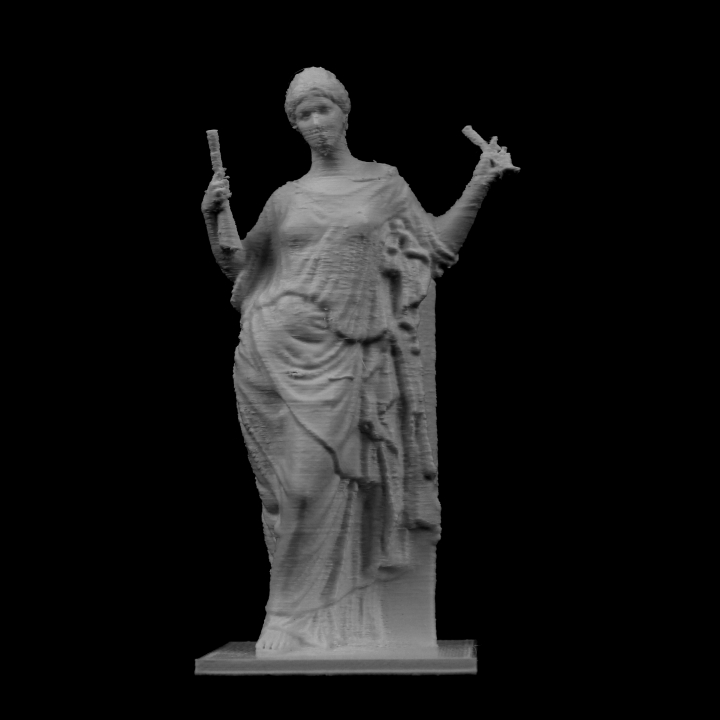
Aphrodite Leaning against a Pillar at The Louvre, Paris
myminifactory
Initially identified as Thalia, the muse of comedy, this statue was later taken for Euterpe, the muse of flute-playing, in the nineteenth century. Before that, it was believed to be an ancient replica of Aphrodite leaning against a pillar, probably Alcamenes' Aphrodite of the Gardens sculpted at the end of the fifth century BC. The pose of the goddess and the handling of the drapery are "mannerist" in style, showcasing an openly sensual treatment of the female body. Formerly part of Louis XIV's collection, this statue has been subject to numerous interpretations over the centuries. It was first identified as a muse due to the crow and bay branch carved on the pillar, symbols of Apollo, protector of the Muses. Some thought they recognized Thalia, muse of comedy, holding a grimacing mask in her right hand. In the nineteenth century, the statue was believed to represent Euterpe, muse of flute-playing, whose attribute is a double flute. It wasn't until later that century that the work was identified as a classical replica of Aphrodite leaning against a pillar, comparable to decoration on certain late fifth-century BC bronze reliefs. This time, there could be no doubt about the figure's identity, associated with Eros. The statue is likely a reproduction of Alcamenes' famous Aphrodite of the Gardens made at the end of the fifth century BC. The original was in Athens and described by Pausanias as wearing a chiton and a robe covering only her lower body, leaning on a pillar or tree trunk with a distinct slouching of the hips. Attribution to Alcamenes is based on the pose of the figure and the handling of the drapery, reminiscent of sculptures in the temple of Athena Nike and certain caryatids of the Erechtheum. This statuary type is also seen in a relief in the Louvre that reproduces the base of statues for the temple of Hephaestus in Athens. This piece is firmly in the "mannerist" style developed from 430 BC onward, characterized by an unstable pose and rich play of folds with symmetrical curves tracing almond shapes around the belly and thighs. The garment has slipped away slightly to reveal the left shoulder, a motif inspired by goddesses depicted in the Parthenon frieze and eastern pediment. This object is part of "Scan The World", a non-profit initiative introduced by MyMiniFactory through which we are creating a digital archive of fully 3D printable sculptures, artworks, and landmarks from across the globe for public access. Scan the World is an open source community effort, if you have interesting items around you and would like to contribute, email stw@myminifactory.com to find out how you can help.
With this file you will be able to print Aphrodite Leaning against a Pillar at The Louvre, Paris with your 3D printer. Click on the button and save the file on your computer to work, edit or customize your design. You can also find more 3D designs for printers on Aphrodite Leaning against a Pillar at The Louvre, Paris.
